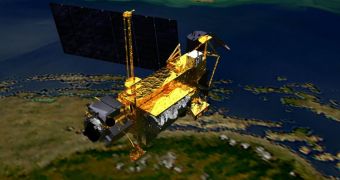According to the conclusions of the latest study on how and when the NASA Upper Atmospheric Research Satellite (UARS) will return to Earth, it would appear that the instrument will start burning in the upper reaches of the atmosphere a day earlier than first established.
Experts now expect the event to take place on September 23. Knowing where the massive, 6.5-ton spacecraft will impact the ground is of great importance, given the amount of debris it may produce.
In all likelihood, it will burn up entirely while reentering the atmosphere, but the American space agency is not interested in taking any kind of chances. The satellite needs to be shepherded to its demise with extreme care, officials say.
UARS was launched back in 1991, and has since provided scientists with vast amounts of data on the planet's atmospheres, but especially about the hole in the ozone layer. Its mission was successfully completed back in 2005, when mission controllers shut it down.
At the time, they planned for the spacecraft to fall out of orbit in late 2011, and that time has come. Initially, NASA had no precise idea about when it drops, due to the fact that the event could take place anytime from late September to early October.
As it closely monitored the spacecraft, more data on its trajectory and orbital characteristics became available. Eventually, this allowed the investigators to figure out the exact date when UARS are destroyed, Space reports.
“Re-entry is expected Sept. 23, plus or minus a day. The re-entry of UARS is advancing because of a sharp increase in solar activity since the beginning of this week,” NASA officials said in an announcement made available yesterday.
According to orbital physicists, whenever the Sun experiences a spike in activity, the larger number of particles and radiations it emits tend to create extra drag for satellites. In some cases, this forces control teams to fire up thrusters in order to ensure a stable orbit.
As for safety, NASA says that the chances of UARS hitting a person on the surface are extremely remote, of only 1-in-3,200. “Look at how much of Earth is covered with water. There's a really good chance it's going to go straight into the ocean,” Victoria Samson explains.
She is the director of the Secure World Foundation Washington Office. The SWF is an organization whose purpose is to promote the peaceful use of low-Earth orbits, as well as deep space in general.
NASA investigators have estimated that around 26 large pieces of debris will survive reentry. These components are made of titanium or other similar materials, which can all withstand temperature reaching thousands of degrees.

 14 DAY TRIAL //
14 DAY TRIAL //